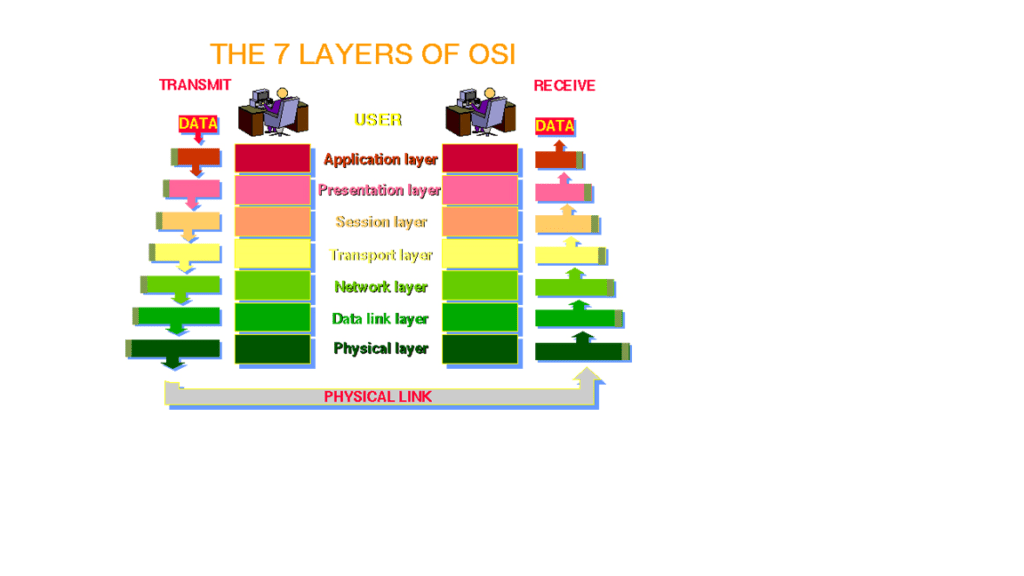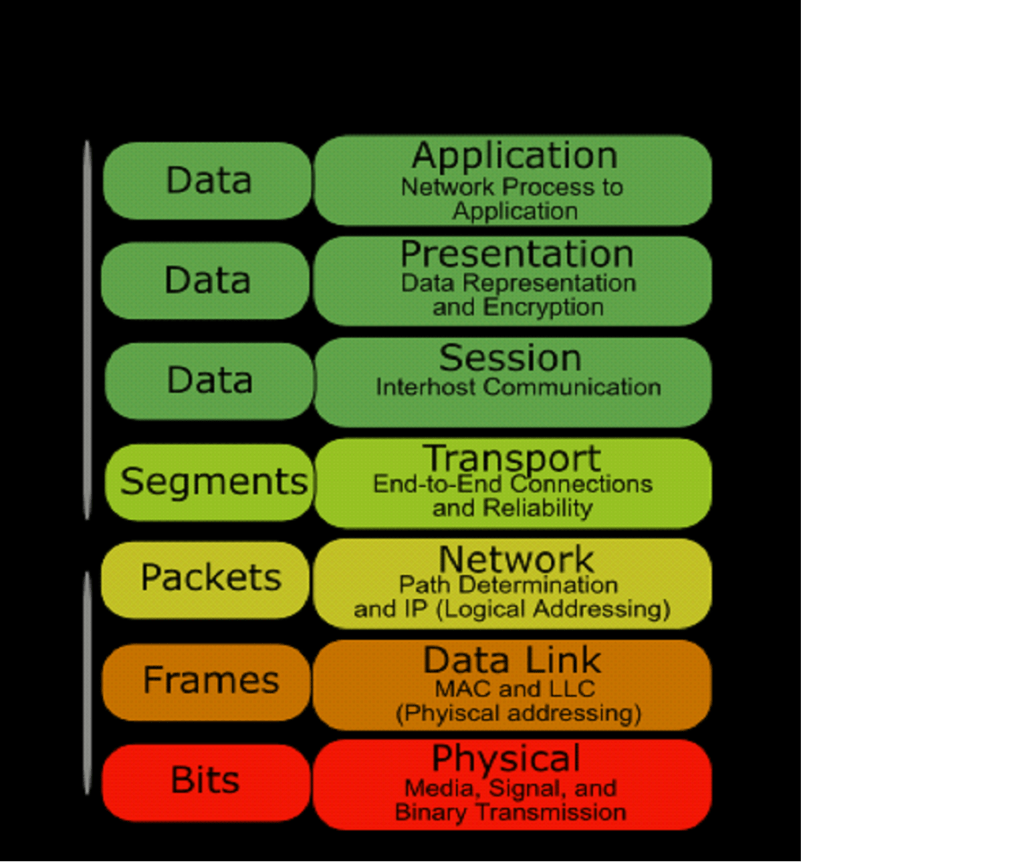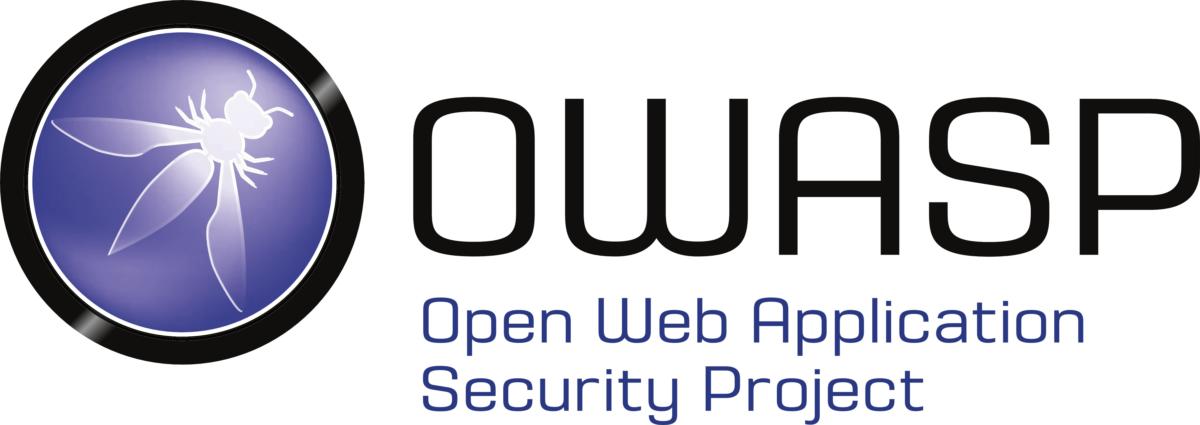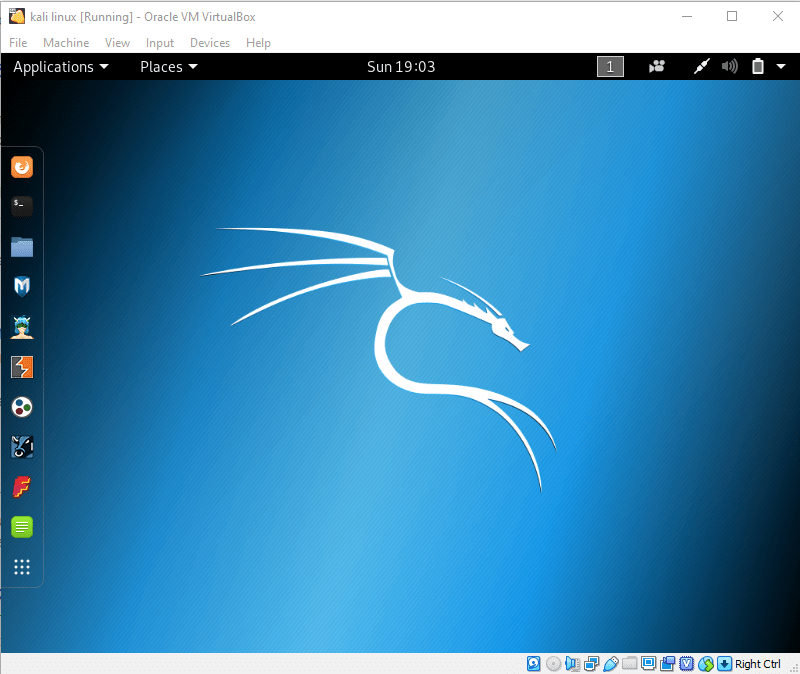What is OSI 7 Layers Reference Model

Here you will learn OSI Model Layer Introduction, an overview of the 7 OSI reference model, application, session, transport, network, and physical layers. If you want to remember the sequence of the OSI layers model name then the following two sentences can help you a lot for this purpose.“All People Seems To Need Data Processing”.
Open Systems Interconnection (OSI) model is developed by ISO (International organization for standardization) in 1984. OSI reference model is a logical framework for standards for network communication.
The OSI reference model is now considered as a primary standard for internetworking and inter computing. Today many network communication protocols are based on the standards of the OSI model. In the OSI model, the network/data communication is defined into seven layers.
These 7 layers further divide the tasks of moving the data across the network into subtask and hence complete one communication cycle between two computers or two network devices. Each layer is assigned a task and the task is completed independently. The OSI layers have clear and independent characteristics and tasks.
The 7 layers of the OSI models can be divided into upper and lower layers. I have defined the characteristics, tasks, and features of each layer separately.
Layer 7: Application Layer
The application layer defines the interfaces for communication and data transfer.
This layer also provides and support services such as job transfer, handles network access, e-mail supports user applications and error recovery.
Protocols: FTP, DNS, SNMP, SMTP, TELNET, TFTP protocol are operated on the application layer.
Layer 6:Presentation Layer
The presentation layer presents the data into a uniform format and masks the difference of data format between two dissimilar systems. It also translates the data from an application to the network format. The presentation layer is also responsible for protocol conversion, encryption, decryption, and data compression. The presentation layer is the best layer for cryptography.
Layer 5: Session Layer
The session layer establishes and manages the session between the two users at different ends in a network. The session layer also manages who can transfer the data in a certain amount of time and for how long. The examples of session layers and the interactive logins and file transfer sessions.
The session layer reconnect the session if it disconnects. It also reports and logs and upper layer errors.
Protocols: The protocols that work on the session layer are NetBIOS, Mail Slots.

Layer 4: Transport Layer
The transport layer manages end to end message delivery in a network and also provides the error checking and hence guarantees that no duplication or errors are occurring in the data transfers across the network. The transport layer also provides the acknowledgment of the successful data transmission and retransmits the data if no error-free data was transferred.
It also provides an error handling and connectionless oriented data deliver in the network.
Protocols: These protocols work on the transport layer TCP, SPX, NETBIOS.
Layer 3: Network Layer
The network layer determines how data transmits between the network devices. It also translates the logical address into the physical address e.g computer name into MAC address. It is also responsible for defining the route, managing the network problems and addressing.
The router works on the network layer and if a sending device does not break the data into the similar packets as the receiving device then the network layer split the data into the smaller units and at the receiving end, the network layer reassembles the data.
The network layer routes the packets according to the unique network addresses. The router works like the post office and the network layer stamps the letters (data) for the specific destinations.
Protocols: These protocols work on the network layer IP, ICMP, ARP, RIP, OSI, IPX, and OSPF.
Layer 2:Data Link Layer
Defines procedures for operating
the communication links
Frames packets
Detects and corrects packets transmit errors
Protocols: Logical Link Control
• error correction and flow control
Layer 1: Physical Layer
The physical layer defines and cables, network cards and physical aspects. It defines raw bitstream on the physical media. It also provides an interface between the network and network communication devices. It is also responsible for how many volts for 0 and how many for
1. The physical layer also checks the number of bits transmitted per second and two ways or one-way transmission.
The physical layer also dealing with the optical, mechanical and electrical features.
Protocols: Protocols that work on the physical layer are ISDN, IEEE.



